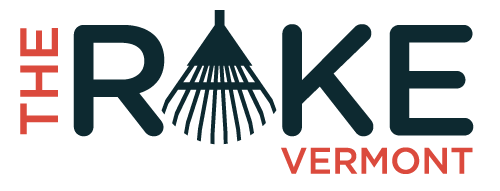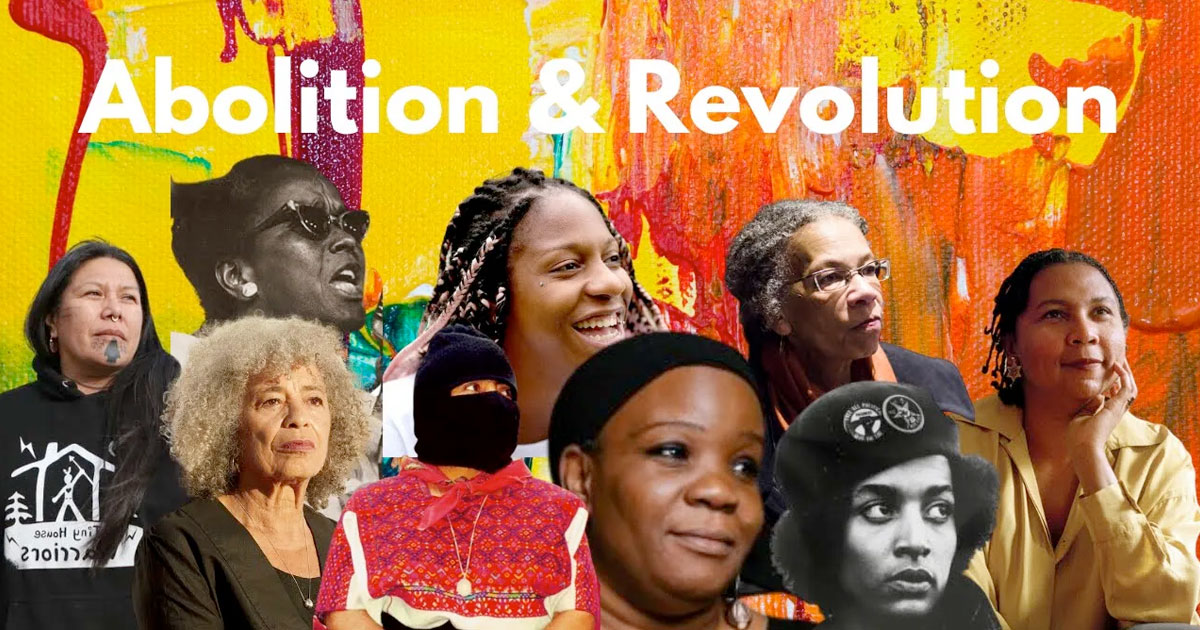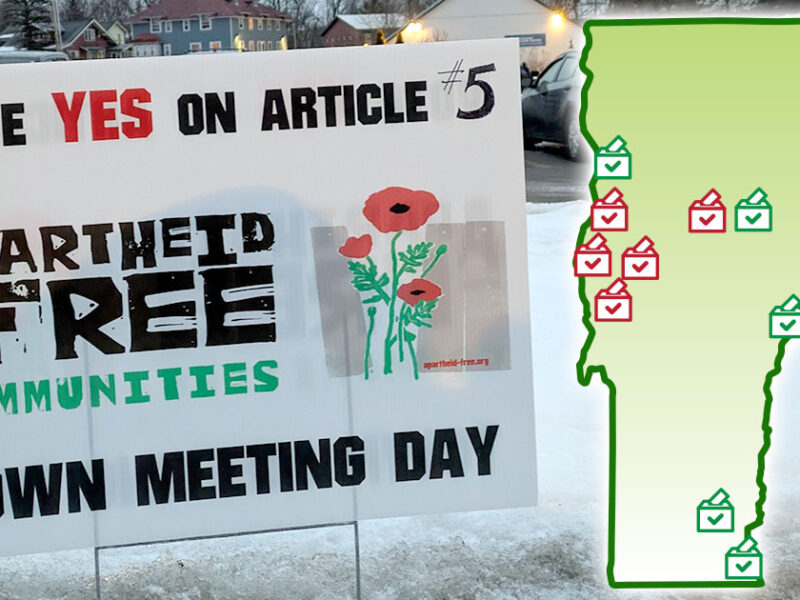A new documentary made by a local filmmaker has ambitious aims. Bookended with words from Assata Shakur and Angela Davis, “Abolition & Revolution” attempts to ground the present political crises with their roots in history, not just to better understand our present context but to learn how to change it.
After its public premiere in Burlington last month, a free screening of the film, followed by conversation, is scheduled for this Friday, September 1 from 6:00-8:00pm at South Burlington Public Library.
The filmmaker, going by Abolish Domination, spoke with The Rake about the ideas, goals, and process behind the film.
Q: Creating a film of this size and scope is no small undertaking. What spurred you to embark on this project?
I started working on this project during the summer of 2020, which was a political awakening for many people, I believe — myself included. A lot of abolitionist reading lists were going around on social media at that time, and I started watching a lot of talks by Angela Davis, Ruth Wilson Gilmore, Mariame Kaba, and more on YouTube. It was a period of immense learning for me, and I wanted to share that knowledge with people learning alongside me.
Q: How long did it take you to create the film, and what was your process like?
I’ve been working on the film on and off for the past three years.
Much of the work that went into the film was the learning process. I’d watch lectures and documentaries on YouTube, write down the timestamps of notable quotes, and then edit those quotes into the documentary. These are some of the many resources that guided me along this journey: AfroMarxist, Indigenous Action Media, Black Socialists in America, Haymarket Books, AK Press, Andrewism, and bell hooks.
Once the quotes were pulled, they had to be arranged in a way that told a narrative and constructed an argument. I tried for my voice to be in the documentary as little as possible, but I did feel it was necessary at times to add voice over to connect one idea to another.
One of the most fun parts of the process for me was adding in the music. All of the music in the film — from Noname, N.W.A., Klee Benally, Xiuhtezcatl, Sister Souljah, Sima Lee, and more — adds so much energy to the experience. Finally, I reached out to every (living) source featured on-screen in the film for their consent to be featured in the project.
Q: The film is divided into 11 parts, each with its own theme, like Abolition, Land Back, and Autonomy. What was your thinking behind ordering them in the way you did?
The documentary is structured to explore the following questions from various perspectives: “Why abolish the police?” “Why is revolution necessary?” “Why is abolition necessary for revolution?” “Why is revolution necessary for abolition?”
The themes/chapters came together as a way to add structure to the film. The first chapter, “Off the Pigs,” focuses on the function of police as a repressive force against political rebellion. The second chapter, “Abolition,” expands on the first chapter by offering visions of what an abolitionist future without police or prisons might look like.
The third chapter, “The General Strike,” takes us back to what many consider the origins of the modern-day abolitionist movement: the fight to abolish slavery. This is where we are first introduced to the concept of the general strike, which we continue to explore throughout the film.
Chapter IV, “LandBack,” situates the movement for abolition as a decolonial struggle. This section provides another perspective on police: cops are an occupying army that enforce colonization on Indigenous people and their land. This section includes the Young Lords, as they fought against the U.S. colonization of Puerto Rico.
From the Young Lords, we transition to their contemporaries, The Black Panther Party, in Chapter V. Because many Black Panthers faced political incarceration and continued their work behind bars, this section flows into Chapter VI on the Attica Prison Uprising.
Up until this point, we’ve been focused mostly on movements in the so-called U.S. This is an admitted shortcoming of the film, but something that I tried to work against a bit in Chapter VII, “Imperialism.” This section provides an overview of U.S. imperialism and its driving factors — including the enforcement of “free trade” policies in the late 20th century. This leads into Chapter VIII, “Autonomy,” as free trade and globalization (what Subcomandante Marcos called “The Fourth World War”) were primary drivers behind the Zapatista Uprising.
An overview of the Zapatistas leads to a discussion on anarchism, as the ideologies and practices of the Zapatistas have significant overlap with anarchism, even though the Zapatistas do not identify as anarchists. In order to fully explain what anarchism is, we need to explain what exactly capitalism and socialism are, which is what Chapter IX, “Socialism,” is all about. The broadest chapter in the film, IX includes a theoretical discussion of socialism and an example of socialist principles in practice: Cooperation Jackson. Cooperation Jackson’s ode to Kuwasi Balagoon leads into a discussion on tenant organizing, the general strike, the capital strike, the necessity of revolution, and finally, the rise of mass incarceration as a means of repressing revolution.
In response to mass incarceration, Chapter X discusses Transformative Justice. The film posits that Transformative Justice is a form of mutual aid, tying into Chapter XI. The film concludes with a discussion on how mutual aid networks can be built up into a revolutionary movement.
Q: The concept of the general strike is touched on in several parts: starting with DuBois’ depiction of how enslaved people, through their withdrawal of their labor from the South and application of their labor to the armies of the North, turned a war to preserve the union into a war to eradicate slavery; then with the uprising and strike of prisoners and prison labor in Attica Prison in 1971; and finally with the general strike as a prospective method for revolutions to come. What is it about the general strike that you find compelling as a lever for revolutionary change?
Thank you for noticing that — it was definitely intentional for viewers to draw those connections!
For one, the general strike is powerful. As DuBois teaches us, the general strike was instrumental in toppling one of the most violent regimes in history: slavery in the U.S. As Attica taught us, the general strike has proven to be a powerful tactic for challenging the prison system. And in the summer of 2020, there were movements around the country calling for and building towards a general strike.
The general strike is so central to me because the process of building towards the general strike is itself revolutionary. The structures that need to be built in order for a general strike to be possible — labor unions, tenant unions, debtors unions, homeless unions, mutual aid networks — are prefigurative of the world we want to build. I know I want to live in a world where we are looking out for one another and organizing together for our shared goals.
Also, as an anarchist, I believe that capitalism cannot be overthrown by a small revolutionary vanguard storming the capital. The capitalist paths of Russia, China, Cuba, and every other Marxist-Leninist regime show us that this is not how we overthrow capitalism (for more resources on this, I recommend “The State is Counter-Revolutionary” series by Anark on YouTube and “From Victory to Defeat” by Pao-Yu Ching). A socialist revolution must be led by the masses. The general strike, in my view, is the type of mass action needed to build true working class power.
Q: One of the most memorable moments in the film was the fight over Lincoln Hospital in the South Bronx, how Latinx and allied militants took over the entire facility for a day to demand a safe and healthy hospital for their neighborhoods. Given the present injustices in our health care system, what of that fight resonates with you today?
The Young Lords are inspirational in so many ways. They were bold, taking on incredible risks in their direct actions. But also so smart. They didn’t just take over Lincoln Hospital out of nowhere — they spent an extensive period of time aligning with the hospital workers and organizing the Health Revolutionary Unity Movement (HRUM) so it would be a highly-organized mass action. They held Puerto Rican cultural events and were deeply embedded in their community. The ways in which the Young Lords broke down the barriers between “activist” and “non-activist” to build popular movements is incredibly inspiring, and something that I think we need to carry on in our work today.
Q: Later in the film you discuss the notion of capital strike — just as when workers strike by collectively withdrawing their labor, capitalists strike by collectively withdrawing their money — while overlaying footage of U.S. Senator Bernie Sanders. Given the changed fundamentals of the capitalist world system and the power of capital flows untethered by state or national borders, does the promise of social democracy largely reside in the past at this point?
Social democracy is just capitalism with some perks for some people.
Capitalism is a global system that is not beholden by the laws of any particular nation state. The capital strike that happened under [French President François] Mitterrand is a prime example of this. When Mitterrand tried to implement social democracy policies, the transnational capitalist class pulled their money out of France until Mitterrand caved. If capitalism is not beholden by the laws of any particular nation-state, why is the left so concerned with trying to change the laws of nation-states?
As long as the state exists, so will capitalism. The state requires capitalism in order to maintain its power. Again, I recommend “The State is Counter-Revolutionary” series by Anark on YouTube, as well as “Anarchism & The Black Revolution” by Lorenzo Kom’Boa Ervin.
As long as capitalism exists, so will imperialism. “Settlers” by J. Sakai talks about this. Capitalism is premised upon profit maximization. If capitalists are not continually maximizing their profits by extracting from the citizens of their own country (under “benevolent social democracies”), they will go elsewhere in the world to extract their profits. The documentary “Stealing Africa” by WHY POVERTY on YouTube shows how companies based in Sweden, a “social democracy” with social benefits to its own citizens, pillage the resources of Zambia in order to maximize their profits.
Social democracy depends on imperialism because it is just a nicer form of capitalism, and capitalism is inherently imperialistic (I’m not a Leninist, but Lenin’s “Imperialism, the Highest Stage of Capitalism” got that part right).
Q: How has audience reaction to the film been so far?
So much love. I am humbled and honored by the reaction to the film so far. Friends have told me that they left the film feeling fired up, inspired, and ready to organize — which is all that I could have hoped for and so much more!
Q: Do you plan to release the film to the public online at some point, or will it remain viewable only through screenings for the foreseeable future?
Yes, it will be online soon! Keep a lookout for the YouTube channel “Abolish Domination.” I will be posting it on there very soon.
Q: When it comes to Vermont, where do you see the application of themes in your film (mutual aid, abolition, autonomy)? Specifically in terms of abolition, do you have any reflections on how the Battery Park movement was able to earn some gains, only to see them wiped out by reactionary forces in the face of “crime wave” narratives and a drive to the ballot box (perhaps this speaks to your comment that electoralism will not solve these problems)?
I wasn’t in Vermont for the Battery Park movement, but in the past two years I’ve lived here, I’ve seen that there is so much incredible work happening in Vermont right now. FreeHer VT is fighting proposals for new prisons. The Peoples’ Farmstand, Conscious Homestead, Releaf Collective, Every Town, Cooperation Vermont, and Ishtar Collective are building towards political autonomy with grassroots food sovereignty projects. The Vermont AFL-CIO, Vermont IWW, and Burlington Tenants United are building radical working class unions.
The Peoples’ Kitchen, Pancakes For The People, Food Not Cops, and central Vermont flood relief efforts are practicing mutual aid. I’ve seen first-hand how the networks and communities formed by these mutual aid efforts have allowed us to depend on one another, rather than the cops, in times of crisis. By keeping the cops out of those crisis situations, space was given for healing and transformation, rather than brutality and incarceration.
So yes, politicians suck and electoralism is a problem. Thankfully, there are many wonderful movements here working outside the ballot box for radical change.
Q: Staying with Vermont, do you see any concerning signs, like radical movements being co-opted and diluted? I’m reminded of how it’s now in vogue for large non-profits to use the term “mutual aid” when all they’re doing is the same charity work they’ve done for decades.
For sure, nonprofits do their nonprofit thing by co-opting and draining energy from radical movements.
But also, a lot of what I’m concerned about is issues happening inside these leftist spaces. Activists who are white — myself included — need to always be doing more to center, cede power to, and work as accomplices for BIPOC activists. Particularly in a state as white as Vermont, the default will be that white people will have more power than BIPOC, unless conscious and concerted efforts are made to disrupt those power imbalances. Ask yourself: who is in leadership positions, whether those positions are explicit or implicit? Who is taking up the most space in the conversation? Who is talking over and interrupting other speakers?
A similar conversation can be had around cis men in leftist spaces here. Cis men, particularly charismatic and good looking ones (the worst of them all!) can have a lot of power in organizing spaces. Cis men, you all need to move carefully, humble yourselves, and think about how you can cede some of your power to folks who are not cis men — particularly queer/trans BIPOC and BIPOC femmes.
In my experience, spaces that claim to be anti-hierarchical can sometimes function as blind to the inherent power dynamics that exist along the lines of race, gender, class, ability, etc. I think it’s best for us to acknowledge those inherent power dynamics, and make active, conscious decisions to work against them.
Matt Moore is a writer from Vermont. He is on the editorial collective of The Rake Vermont.



